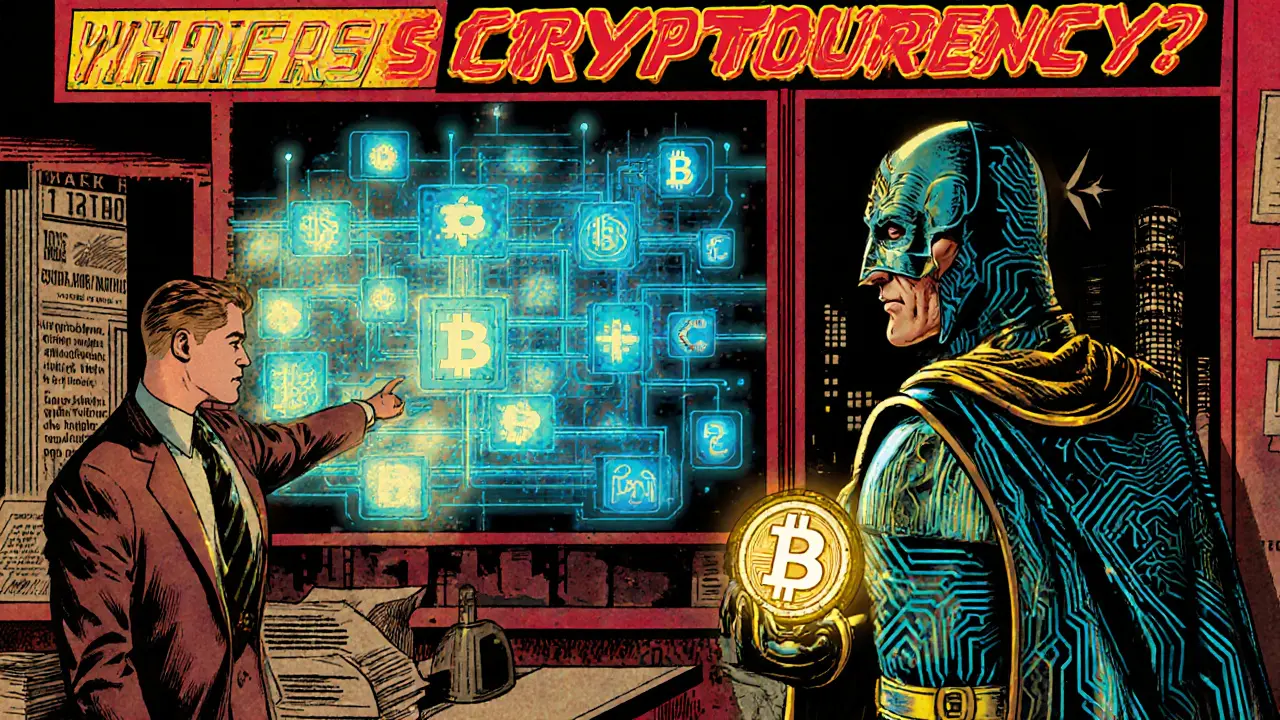
Cryptocurrency Comparison Tool
The first cryptocurrency, designed as digital gold.
- Launch: 2009
- Consensus: Proof-of-Work
- Use Case: Store of value
- Fees: $5-$50
A programmable blockchain enabling smart contracts.
- Launch: 2015
- Consensus: Proof-of-Stake (Ethereum 2.0)
- Use Case: Smart contracts & dApps
- Fees: $2-$5 (Layer 1)
High-throughput blockchain for DeFi and NFTs.
- Launch: 2020
- Consensus: Proof-of-History + PoS
- Use Case: High-throughput DeFi & NFTs
- Fees: ~$0.01
Key Takeaways
Bitcoin is best for long-term value storage and is often called "digital gold" due to its limited supply and scarcity model.
Ethereum offers a flexible platform for creating decentralized applications and smart contracts, making it ideal for developers and DeFi enthusiasts.
Solana provides fast, low-cost transactions, making it attractive for high-volume applications and NFT markets.
Investment Projection
Quick Summary
- Cryptocurrency is digital money secured by cryptography and stored on a blockchain.
- Bitcoin and Ethereum together hold about 60% of market value.
- Secure your assets with a proper wallet and keep control of private keys.
- Start small, use dollar‑cost averaging, and limit exposure to 5‑10% of your portfolio.
- Regulations are evolving; stay informed about your local rules.
What Is cryptocurrency a digital or virtual form of currency that uses cryptographic techniques to secure transactions and control the creation of new units, operating independently of traditional banks?
In plain English, cryptocurrency is money you can send over the internet without a bank acting as a middleman. The idea first appeared in the 2008 Bitcoin whitepaper by the mysterious Satoshi Nakamoto, and Bitcoin launched in January 2009 as the world’s first successful blockchain‑based currency.
By 2025 the market has exploded into a multi‑trillion‑dollar ecosystem with thousands of digital assets. Bitcoin and Ethereum dominate, together representing roughly 60% of total market cap, while the top ten coins capture about 85% of the value.
How blockchain a distributed ledger that records every transaction across a network of computers called nodes Makes It All Possible
Every transaction is bundled into a block, then cryptographically linked to the previous block. This chain of blocks is stored on many nodes around the world, so no single party can alter the history. The verification process uses cryptographic hashing, which makes fraud extremely difficult.
Because the ledger is public, anyone can verify a transaction’s authenticity. That transparency, combined with the inability to double‑spend, gives cryptocurrencies their unique security profile.
The Two Titans: Bitcoin the first cryptocurrency, designed as digital gold and a store of value and Ethereum a programmable blockchain that enables smart contracts and decentralized applications
Bitcoin focuses on scarcity. With a capped supply of 21million coins and a proof‑of‑work consensus, it’s often called “digital gold.” Transaction fees range from $5 to $50 during peak congestion, and confirmations can take 10‑60 minutes.
Ethereum adds flexibility. Its native token, Ether (ETH), powers a platform where developers write smart contract self‑executing code that runs automatically when predefined conditions are met and launch decentralized applications (dApps). Fees-called gas-are paid in ETH and usually cost a few dollars, though Layer2 solutions can bring the price down to cents.
Both networks run 24/7, allowing global transfers that settle within minutes to a few hours, depending on network load and the fee you pay.
Getting Started: Wallets and exchange a platform where users can buy, sell, or trade cryptocurrencies
Before you buy anything, you need a place to store it. There are two main categories:
- Hot wallets - software‑based, connected to the internet (mobile apps, desktop clients). Easy for daily use but more vulnerable to hacks.
- Cold wallets - hardware devices or paper backups kept offline. Best for long‑term holding.
Popular hardware options include the LedgerNanoX ($149) and TrezorModelT ($219). Setting one up takes about an hour and gives you full control over your private keys-exactly what Andreas Antonopoulos means when he says “not your keys, not your coins.”
To acquire crypto, you’ll need an exchange. For beginners, Coinbase is often recommended because of its compliance, clear UI, and extensive tutorials, though fees range from 1.5% to 4%. Binance offers lower fees (0.1%) but a steeper learning curve and fewer regulated protections.
Account creation is quick-5‑15minutes-but full identity verification typically takes 1‑3days. Once verified, you can link a bank account, deposit fiat, and start buying Bitcoin, Ethereum, or other assets.
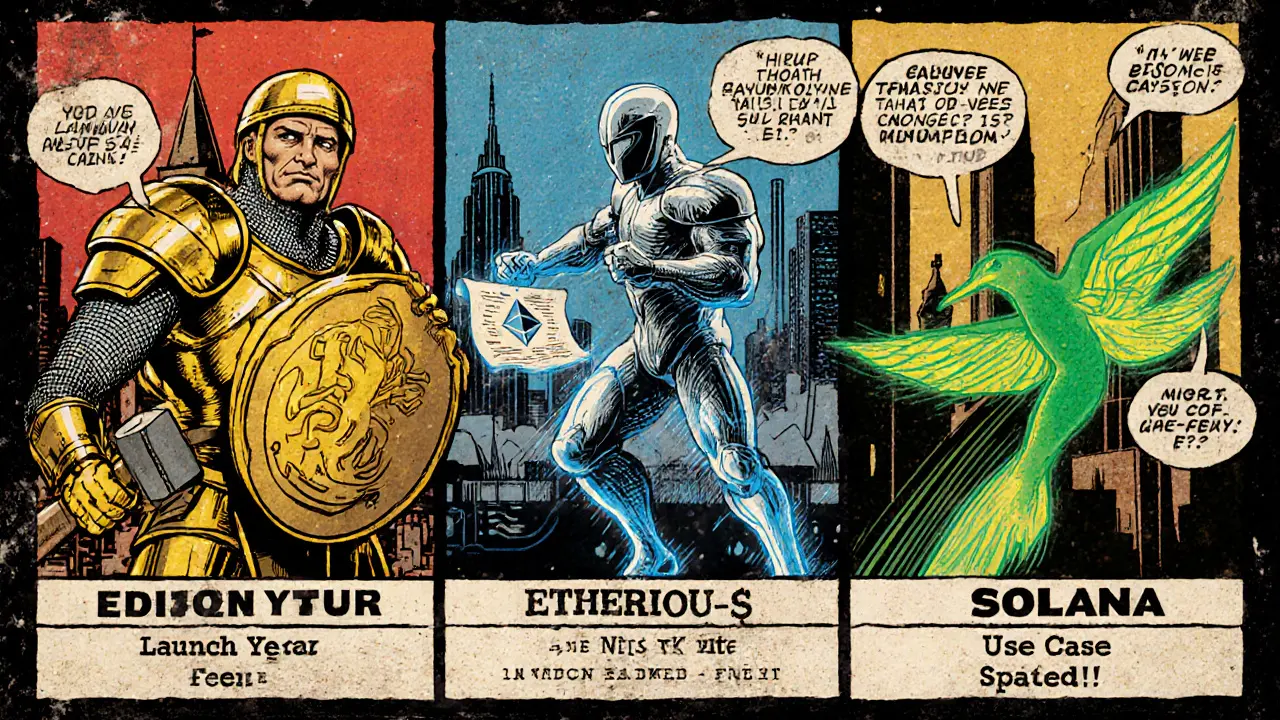
Security Basics Every New Investor Must Follow
Scams cost billions each year. In 2022 alone, Chainalysis reported $3.8billion lost to crypto fraud. Follow these simple rules:
- Never store large amounts on an exchange; move them to a cold wallet.
- Write down your recovery phrase (12‑24 words) on paper and keep it offline.
- Enable two‑factor authentication (preferably an authenticator app, not SMS).
- Verify URLs carefully; phishing sites mimic legitimate exchanges.
- Consider using a reputable security suite that offers biometric login for your hardware wallet.
Most breaches happen because users keep “custodial” keys on platforms that can be hacked or frozen. Holding your own keys eliminates that risk.
Investing Strategies for Beginners
Because crypto swings wildly-daily moves of 5‑20% are common-most advisors suggest a conservative approach:
- Allocate only a small slice of your total portfolio (5‑10%).
- Dollar‑cost averaging (DCA): buy a fixed dollar amount weekly or monthly, regardless of price.
- Diversify between Bitcoin, Ethereum, and a couple of promising altcoins (e.g., Solana, Polygon) to spread risk.
- Set a time horizon of at least 2‑3years; short‑term trading carries a success rate under 20% for most people.
Technical analysis can be fun, but beginners benefit more from staying informed about news, regulatory changes, and macro trends. Combine that with a solid risk‑management plan (stop‑loss orders, portfolio rebalancing) to protect against sudden downturns.
Bitcoin vs. Ethereum vs. Solana: Quick Comparison
| Feature | Bitcoin (BTC) | Ethereum (ETH) | Solana (SOL) |
|---|---|---|---|
| Launch Year | 2009 | 2015 | 2020 |
| Primary Use | Store of value / digital gold | Smart contracts & dApps | High‑throughput DeFi & NFTs |
| Consensus | Proof‑of‑Work | Proof‑of‑Stake (Ethereum 2.0) | Proof‑of‑History + PoS |
| Typical Transaction Fee | $5‑$50 | $2‑$5 (Layer1) | <$0.01 |
| Average Confirmation Time | 10‑60min | 12‑30sec | 400‑800ms |
| Market Share (2025) | ≈45% | ≈15% | ≈2% |
Regulatory Landscape in 2025
The EU rolled out the Markets in Crypto‑Assets (MiCA) framework in 2024, creating a standardized set of rules for issuers and service providers. In the United States, regulation remains fragmented-some states treat crypto as a commodity, others as a security. That patchwork means you should always check the latest guidance in your jurisdiction before committing large sums.
One bright spot: both the U.S. and EU have approved Bitcoin and Ethereum ETFs, letting retail investors gain exposure through traditional brokerage accounts. These funds add a layer of custodial protection and can help smooth out price volatility.
What to Expect Over the Next Few Years
Industry forecasts differ, but most experts agree that crypto will stay around. ARK Invest sees Bitcoin potentially hitting $1million by 2030 if adoption keeps climbing, while Ethereum’s sharding upgrades aim to boost throughput by 1,000× by 2026. Layer‑2 scaling is already cutting Bitcoin transaction costs by 90%, making everyday payments more viable.
Risks remain-regulatory crackdowns, energy concerns for proof‑of‑work networks, and occasional smart‑contract bugs can cause sudden price drops. Treat crypto as a high‑risk, high‑reward portion of a well‑balanced portfolio.
Frequently Asked Questions
How do I buy my first cryptocurrency?
Start by creating an account on a regulated exchange like Coinbase or Binance, complete identity verification, deposit fiat via bank transfer, and then place a market order for Bitcoin or Ethereum. Transfer the purchased coins to a personal wallet-preferably a hardware wallet-for long‑term safety.
What’s the difference between a hot and a cold wallet?
Hot wallets are software‑based and stay online, making them convenient for frequent trading but more exposed to hacks. Cold wallets store private keys offline-usually on a hardware device or paper-offering stronger protection for large or idle holdings.
Is cryptocurrency a good long‑term investment?
Historically, Bitcoin has delivered over 100% average annual returns, but it’s also extremely volatile. Most financial advisors recommend limiting exposure to 5‑10% of your total portfolio and using dollar‑cost averaging to smooth price swings.
Do I need to pay taxes on crypto gains?
Yes. In most countries, cryptocurrency is treated as property, so capital gains taxes apply when you sell or exchange it. Keep detailed records of purchase dates, amounts, and prices to simplify filing.
How can I protect my crypto from scams?
Never share your private keys or recovery phrase, always verify URLs, use two‑factor authentication, and prefer hardware wallets for sizable balances. Treat any unsolicited investment offer with extreme caution.


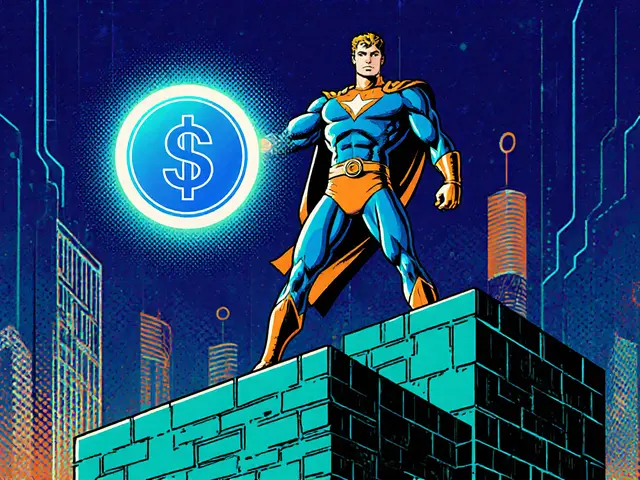
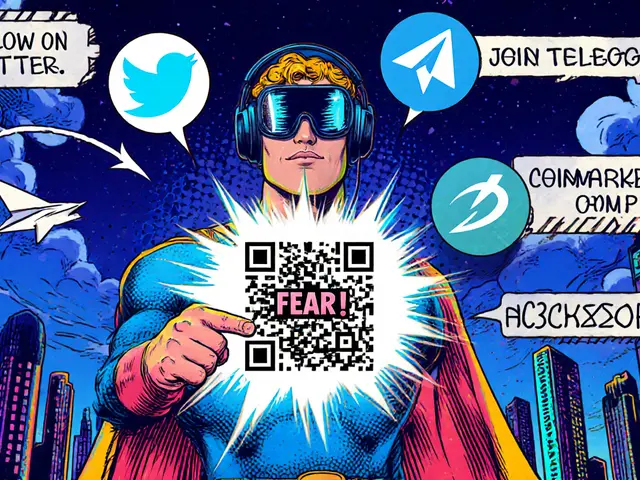
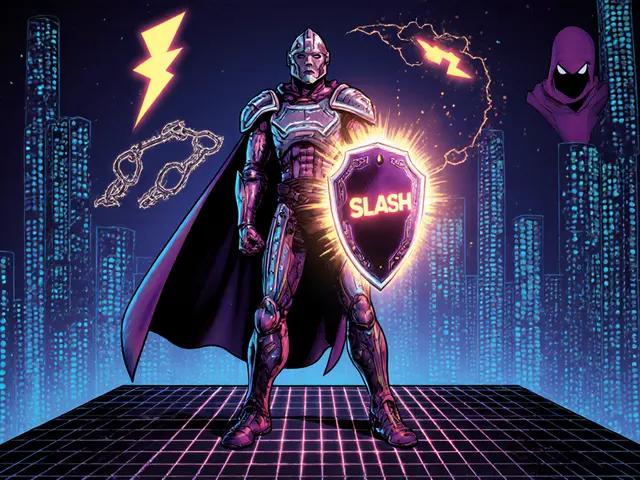

There are 20 Comments
Vaishnavi Singh
Cryptocurrency, at its core, is a reflection of humanity's endless quest for trust without borders. It invites us to contemplate value beyond the patina of metal and paper. In a world where institutions have eroded, the immutable ledger offers a promise of transparency. Yet the very immutability can become a prison if we ignore the ethical dimensions. The digital gold of Bitcoin whispers of scarcity, but scarcity can also breed obsession. Ethereum, with its programmable contracts, suggests that law can be written in code, raising philosophical questions about intention. Solana's speed tempts us with efficiency, yet speed without deliberation may sacrifice depth. The volatility of these assets mirrors the turbulence of our inner lives, reminding us that certainty is an illusion. As we invest, we are also investing in a narrative about decentralization and empowerment. That narrative, however, is co‑authored by miners, developers, and regulators, each with their own motives. When we ask "what is money?", we are also asking "what do we value?". The answer may lie not in the token itself but in the community that sustains it. In this way, crypto acts as a mirror, reflecting both our hopes and our fears. It challenges us to define trust, ownership, and freedom in the digital age, urging a reconsideration of the old contracts that bind societies. Ultimately, the journey through Bitcoin, Ethereum, and Solana is a meditation on the evolving relationship between technology and the human spirit.
Linda Welch
Wow another guide on crypto like the world needs yet another overview of the same old hype. Bitcoin is "digital gold" they say and you can hear that everywhere from the streets to the boardrooms in a tone that makes me wonder if we ever stopped thinking. Ethereum promises smart contracts but then you have to learn how to write code and pay gas fees that fluctuate like a rollercoaster that never ends. Solana jumps in with blazing speed while simultaneously promising low fees that make you feel like you’re getting a bargain… if only it weren’t for the occasional network outages that remind you it’s still a fragile experiment. The comparison tool tries to be helpful but really just adds another layer of complexity to a subject that should be simple: invest wisely or stay out. And let’s not forget the regulators who will eventually step in and decide whether your "decentralized" assets belong in a jurisdiction they haven’t even defined yet. It’s a saga of innovation, hype, and inevitable regulation – a story we’ve seen before in every new tech boom, and we’ll probably see it again when the next coin becomes the darling of the day.
Kevin Fellows
Great rundown! If you’re just starting, stick with Bitcoin for the basics and explore Ethereum once you’re comfy.
meredith farmer
Sure, "just start with Bitcoin" sounds nice but it ignores the hidden hand pulling the strings. You think those miners are neutral? Think again – they’re the real power brokers, and the whole system is a façade for a new form of centralized control that nobody wants to admit.
Peter Johansson
Love the clarity! Remember, diversification is key – a bit of BTC, some ETH, and maybe a splash of SOL can balance risk and reward.
Cindy Hernandez
If you’re curious about fees, Bitcoin’s $5‑$50 range reflects its security, whereas Ethereum’s lower fees are getting even cheaper with the move to proof‑of‑stake. Solana’s sub‑cent fees are impressive, but keep an eye on network stability.
Karl Livingston
Crypto is like a kaleidoscope – constantly shifting patterns that can be dazzling or dizzying. The tech behind each chain tells a story: Bitcoin’s rugged mountain, Ethereum’s bustling metropolis, Solana’s high‑speed highway. Pick your adventure wisely.
Kyle Hidding
From a systems perspective, Bitcoin’s PoW is a resource‑intensive consensus algorithm that offers high security at the cost of energy inefficiency. Ethereum’s transition to PoS reduces the energy footprint but introduces new attack vectors like validator centralization. Solana’s hybrid PoH+PoS achieves throughput but raises concerns about node hardware requirements and network resilience.
Andrea Tan
Nice summary.
Gaurav Gautam
Hey everyone! If you’re feeling overwhelmed, start small – maybe $100 in Bitcoin, watch it for a month, then experiment with a tiny slice of Ethereum. The key is staying curious and not letting FOMO drive you.
Cody Harrington
Agreed, a balanced portfolio can mitigate volatility. Pairing a store‑of‑value like Bitcoin with a utility token like Ethereum often provides both stability and growth potential.
Chris Hayes
The guide is solid, but it glosses over the fact that most retail investors end up buying high and selling low because of market hype cycles.
victor white
While the comparative analysis is commendably concise, one must not overlook the underlying architectural philosophies that differentiate these protocols. Bitcoin’s immutable Satoshi‑centric design is a testament to cryptographic purity, whereas Ethereum’s Turing‑complete environment invites boundless innovation, albeit at the expense of deterministic predictability. Solana, on the other hand, embodies a radical departure, leveraging Proof‑of‑History to achieve unparalleled throughput, a feat that some purists might deem anathema to the original ethos of decentralization. One must question whether speed can truly substitute for security, especially when the ecosystem is still nascent and subject to unforeseen adversarial pressures. Moreover, the sociopolitical ramifications of a decentralized ledger cannot be divorced from the technical discourse; each protocol implicitly reshapes power dynamics across borders, a reality that demands vigilant scrutiny.
mark gray
I respect the technical depth, but let’s keep the conversation accessible. For most newcomers, focusing on practical use‑cases and safety measures is more helpful than debating philosophical purity.
Alie Thompson
Honestly, this whole crypto hype is a moral quagmire. We’re celebrating speculative bubbles while ignoring the environmental toll, the potential for fraud, and the widening inequality it creates. If we truly care about ethical finance, we should be demanding transparency, regulation, and sustainable practices, not just glorifying digital tokens as the future without questioning who benefits. The narrative that crypto is inherently liberating is a convenient story for those looking to profit, while the real victims often remain unseen.
Samuel Wilson
In summary, the guide offers a clear comparative framework. For anyone seeking to allocate capital across major cryptocurrencies, the outlined features and fee structures provide a useful starting point.
Rae Harris
Sure, but let’s not forget that every “new technology” hype cycle eventually crashes. I’m skeptical about Solana’s claims; it feels like a marketing sprint rather than a sustainable marathon.
Danny Locher
Overall, solid intro. Just remember to do your own research and don’t invest more than you can afford to lose.
Emily Pelton
Great info; however, let's emphasize that newcomers should prioritize security-use hardware wallets, enable 2FA, and regularly back up seed phrases! Also, beware of scams promising guaranteed returns; they’re almost always fraudulent.
sandi khardani
The guide presents a somewhat sanitized view of the crypto market, omitting critical risk factors such as regulatory uncertainty, market manipulation, and systemic vulnerabilities. While the comparative tables are informative, they lack depth regarding liquidity concerns, especially for newer entrants like Solana, whose rapid growth could mask underlying fragilities. Moreover, the emphasis on fee structures does not address hidden costs like slippage or the impact of network congestion on transaction finality. Potential investors should also consider the legal ramifications of cross‑border transfers and tax obligations, which are often glossed over in introductory materials. In the absence of a rigorous risk assessment, readers may develop an overly optimistic outlook, leading to imprudent financial decisions. It is imperative that educational resources incorporate a balanced perspective, highlighting both opportunities and the myriad challenges inherent to digital asset investment.
Write a comment
Your email address will not be published. Required fields are marked *